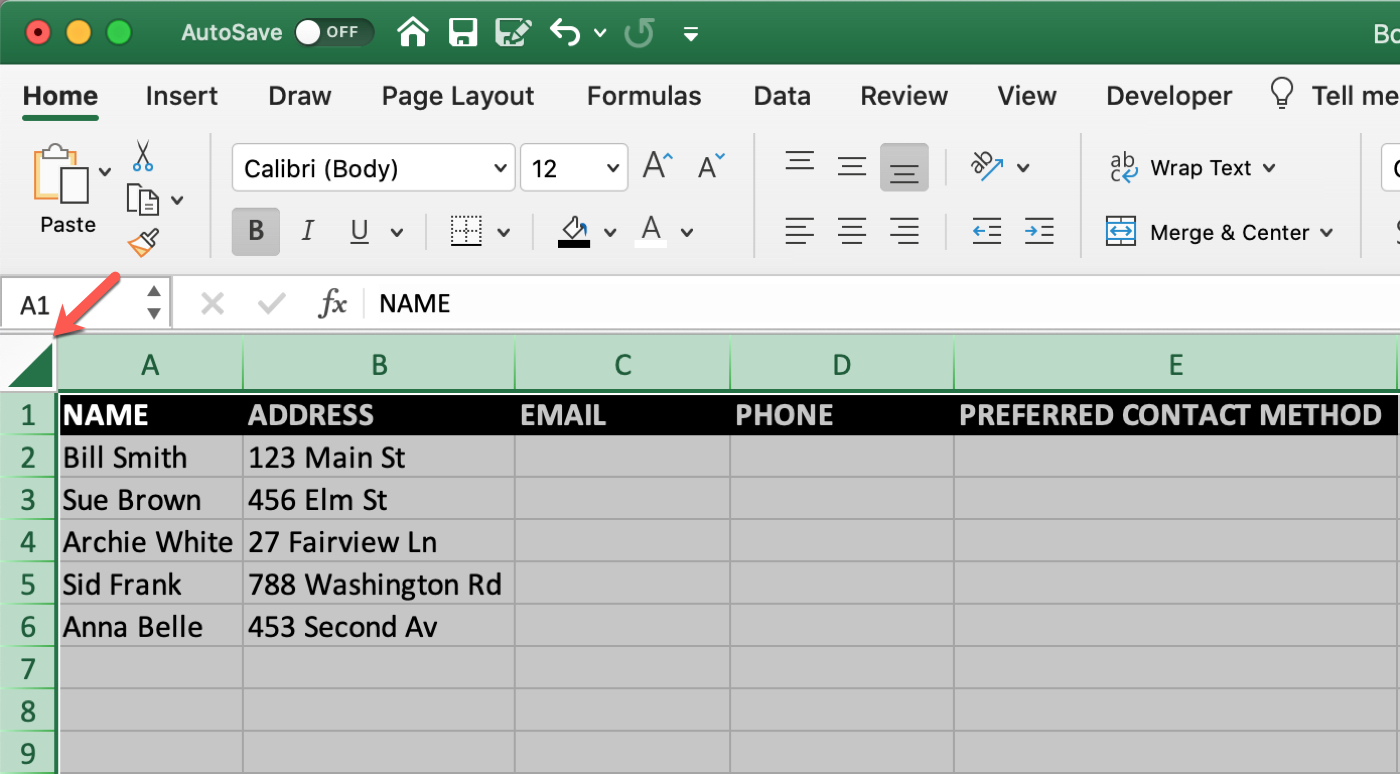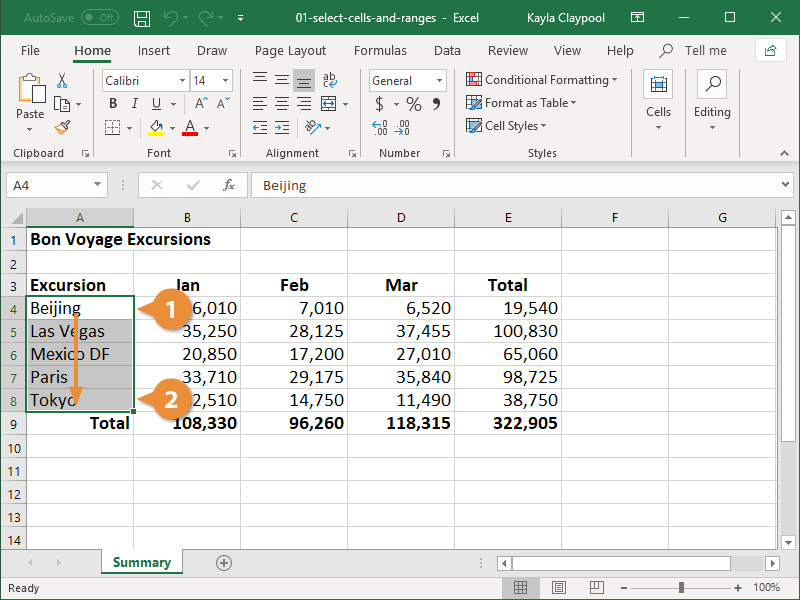

If your classes all have different dates, you can simply use Lesson Date for your columns. Drag Video View % from the list box into the Values box.Drag Class and/or Lesson Date from the list box into the Columns box (see note below).Drag Student Name from the list box into the Rows box.Drag and drop fields from the list into the locations below the list as follows:.In the Create a Pivot Table box that appears, you can accept the defaults (because you've already selected the data set you want to use) and click OK.Įxcel changes to show you the new worksheet containing your new pivot table in the main panel, and a Pivot Table options panel on the right side of the sheet.If you do not see Pivot Table as an option, click Tables then click Pivot Table from the options provided as shown below. Click Insert from the main menu, then click Pivot Table from the left side of the Insert ribbon.Click the TOP LEFT corner of the sheet, as shown below. Ctrl + A (for Windows) or Cmd + A (for Mac) With your data export open in Excel, select all the data in the sheet.To create a pivot table for student analytic data SPECIFICALLY the below instructions create a pivot table view where each Student occupies one row, each class occupies one column, and the data values shown are for "video view %".

Once again, the below procedure uses a CSV export from the Section > Analytics > Students page, but you can apply these steps to any exported data set. OR you can create ONE pivot table, then adjust which data it uses.

Each new pivot table lives in a different tab/worksheet of the single XLSX file. You can create as many pivot tables as you want. You don't HAVE to do this until you're done creating your pivot table, but doing it first ensures you can just click the Save icon if you get your pivot table(s) configured the way you want.įrom there, follow the below instructions to create a pivot table. Pivot tables generate new worksheets in the file (the original data sheet is unchanged), and CSV file types can only have a single worksheet. Generate a CSV Export from Echo360 and open it in Excel. Once set up, you can add or exchange metric values very easily, to show you other data for each student and each class.įirst things first. The metric we want to see is used as the value, with one row for each student and one column for each class. In our example, we are using Pivot tables to give us at-a-glance listings of student engagement metrics from a course section. You can change these as needed to view different values from the same exported data-set. Pivot tables are essentially "data views" where you identify which data items you want for the rows, and which data items you want for the columns, then select the values you want for each row-column intersection. For more information or other steps, refer to the Excel documentation. The information given here is provided as a GUIDE to this Microsoft Excel feature, and specifically for the Echo360 data made available through the platform. It uses the Student Analytic Data export for a section as an example, to show how you can take the sometimes VERY large data files and create "views" of the data that you find most useful. After specifying the desired settings, click the button.This article is designed to provide you with guidance on creating Pivot Tables in Excel. To adjust alignment, select " Center" for " Show Characters". To adjust width, select " Small" for " Width".
SELECT ALL DATA IN EXCEL FOR MAC CODE
Select " Bar Code".Ĭlick the tab in the Bar Code Properties dialog box. Merging data into the layout as a bar codeĬlick the field name " Part Code" and drag it into the layout window.In the same way, merge the field name " Model Name". The font and size can also be changed after text is pasted into the layout.Ĭlick the field name " Part Name" and drag the field name into the layout window. In the Font Size edit box on the Text Properties, specify the font size (e.g. In the Font box on the Text Properties, specify the font (e.g. Specify the font that will be used in the layout: If the file being used contains multiple sheets, the Select Database Table dialog box appears.


 0 kommentar(er)
0 kommentar(er)
